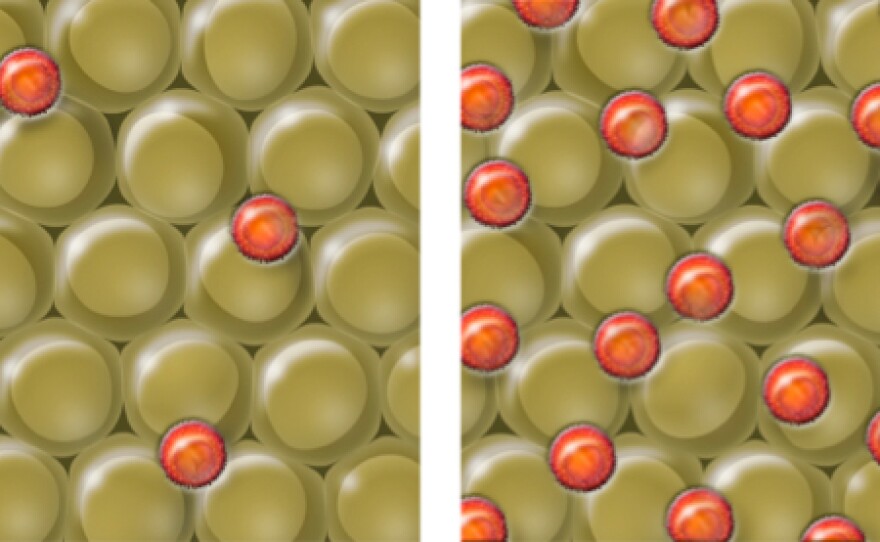Why do some people develop diabetes as they age, even though they're not overweight? In a study published Wednesday in Nature, scientists at the Salk Institute are starting to find out.
The researchers said they've identified a new form of age-related diabetes. Unlike Type 2 diabetes, it's not linked with obesity. Instead, the researchers found diabetes can arise in lean mice from the gradual build-up of a particular kind of immune cell called T regulatory cells in fat tissue.
"As that immune cell accumulates to higher levels, it blocks the efficiency, the function and the ability of that tissue to store fat in a safe way," said Salk Institute professor Ronald Evans, who co-led the study.
As a result, mice can develop the same insulin resistance problems found in Type 2 diabetes, even though they're not carrying much excess fat. Evans says this finding could explain why even thin older people can end up with diabetes.
"Doctors and patients think because they're thin, they're under the impression that it's not a condition they can get," Evans said. "In fact, what we show in this paper is that is not true."
Evans and his colleagues also found a way to block immune cell accumulation in mice, protecting them from this age-related form of diabetes. More research will be needed to explore treatments for humans.
Athena Philis-Tsimikas, chief medical director at the Scripps Whittier Diabetes Institute in La Jolla, said the study could help explain the diversity of patients her organization is treating for diabetes.
"Clinically, we see a wide variety of patient types," Philis-Tsimikas said. "It would seem logical that, with so many clinical pictures, there must be different underlying mechanisms such as those described in this article."






